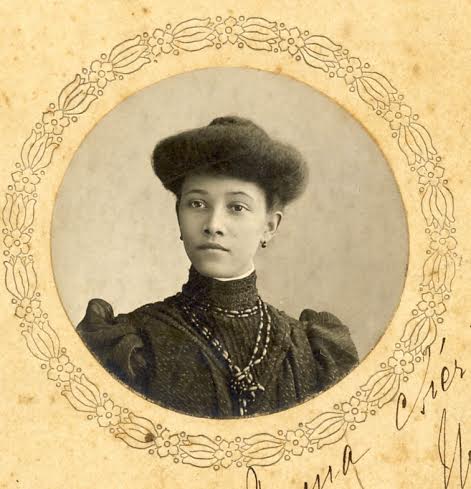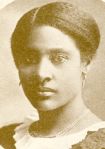These images representing élite Haitian women in the late nineteenth and early twentieth centuries are rich sources for historians. While most scholars have abandoned the idea that photographs represent “objective” depictions of the past, and rather, embrace the notion that they might be political objects and statements in and of themselves, these not only assist in imaging the lives of the women they represented, they also help raise questions about the particular intentions of each woman and their photographers. Were these pictures solely intended as portraits for the consumption of close kinship or did they serve to showcase the sophistication of élite Haitian women to a foreign audience at a time when European immigrants were interacting with well-to-do Haitian families?
As black women, Haitian women’s bodies were political terrains. With rampant pseudo-scientific understanding of blacks women’s sexual degeneration since the mid decades of the nineteenth century, these images contrast sharply with what most observers would have imagined when thinking of women in an “exotic” island. Aside from their aesthetic value, these photographs depict female civility in accordance with Western values of the period. If we understand these pictures as political statements, historians may ask: were these photographs attempting to challenge popular discourses of the day regarding black womanhood and if so, does it follow that black individuals, on a global scale, began to view themselves in accordance and with an implicit acceptance of Eurocentric understandings of race? Similarly, what could a study on images of the Haitian élite reveal about what 1920s Haitian intellectual Jean-Prince Mars called collective bovarism (Ainsi parla l’Oncle, 1928) when reflecting about Haiti’s upper crust?
To this date, perhaps due a lack of material sources, few historians have attempted to answer these questions in relations to Haiti. With their various expositions the CIDIHCA (Centre International de Documentation et d’Information Haïtienne, Caribéenne et Afro-canadienne [International Haitian, Caribbean and African-Canadian Center for Documentation and Information]) — has tried to speculate on these interrogations. In the past decade or so, the organization doubled its efforts to recover long lost photographs of Haiti. Much work still needs to be done with a close collaboration between archivists, historians, but also elements of the civil society (in and out of Haiti).
Irrespective of these difficulties, every little visual fragments of Haiti’s past, as these images make clear, can help us re-image Haitian society and its élite.






